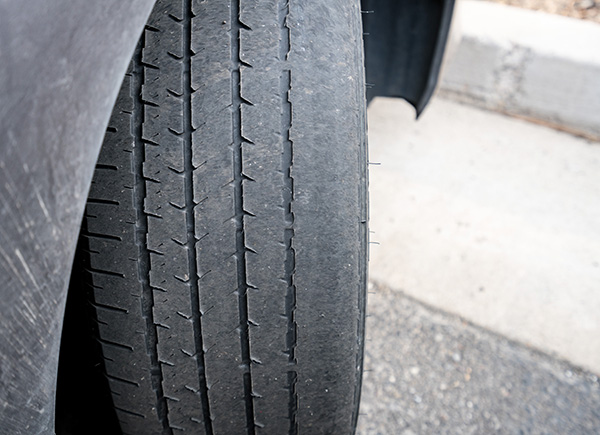
When you think about car maintenance, tires might not always come to mind first. But the condition of your tires is critical for staying safe on the road. Many drivers overlook the wear on their tires, thinking they can push a few more miles out of them. However, driving on bald tires is one of the riskiest choices you can make for yourself and others. We'll explain the reasons why bald tires pose a serious hazard and the signs that it’s time to get them replaced.
What Does It Mean When Tires Are Bald
Bald tires are essentially tires that have worn down to the point where the tread depth is dangerously low. Tire treads are the grooves on a tire's surface that grip the road, channel water away in wet conditions, and keep the car steady on turns and stops. Over time, tire tread naturally wears down, and as it reaches a certain level, it no longer provides the traction necessary for safe driving. A tire is typically considered bald when its tread depth is below 2/32 of an inch.
Driving on bald tires doesn’t just mean a less comfortable ride—it means a loss of control in essential driving situations. Let’s break down why this is a real problem on the road.
Bald Tires Increase the Risk of Hydroplaning
One of the major dangers of bald tires is that they significantly increase the likelihood of hydroplaning. Treads are designed to channel water away from the tire’s contact with the road, maintaining traction even in rainy conditions. When a tire is bald, the absence of adequate tread means there’s nowhere for the water to go, causing the tire to lose contact with the road and start to “float” or slide on the water’s surface. Hydroplaning can lead to loss of steering control, making it difficult to keep your vehicle stable, especially at higher speeds.
During heavy rain or on wet roads, this risk becomes even more significant. With bald tires, even a small puddle can cause your vehicle to lose control. Avoiding this dangerous situation means ensuring your tires have enough tread to properly grip the road.
Poor Braking and Increased Stopping Distances
Another concern with bald tires is the increase in braking distance. Tires with proper tread provide the grip needed to stop quickly when you hit the brakes. Bald tires, however, have minimal traction, which affects their ability to come to a quick stop. This is particularly dangerous in emergency situations where every inch counts.
Think about it: if you’re driving at high speed and need to stop suddenly, bald tires may cause your car to skid or slide forward, significantly lengthening your stopping distance. In urban areas with heavy traffic or in residential areas with pedestrians, this can be especially hazardous. Tires with adequate tread help ensure that when you hit the brakes, your car will respond.
Increased Chance of Tire Blowouts
Tire blowouts are another frightening possibility when driving on bald tires. Tires wear thin as the tread wears down, becoming more susceptible to punctures from sharp objects on the road. Because there’s less rubber between the road and your car, bald tires are more likely to suffer a blowout, especially at high speeds or on rough roads.
A blowout can cause a driver to lose control instantly, and the outcome can be devastating. This risk is particularly high in the summer when hot road temperatures increase tire pressure, putting even more stress on already worn-out tires. By replacing bald tires, you’ll be adding a layer of protection to avoid sudden and potentially catastrophic blowouts.
Reduced Traction on Snow and Ice
If you live in an area with snowy or icy winters, bald tires are even more hazardous. The treads on your tires play a crucial role in gripping the road in low-traction conditions like snow and ice. Without adequate tread, bald tires provide little to no grip, leading to dangerous situations where your car slides instead of stopping or turning.
Winter conditions already demand heightened attention from drivers, and bald tires increase the risk of slipping, sliding, and losing control of the vehicle. In extreme weather, proper tire tread depth is not only recommended—it’s essential for safe driving.
Legal Implications of Driving on Bald Tires
Did you know that driving on bald tires can lead to fines in some areas? Laws regarding tire tread depth vary by state or country, but many have specific guidelines mandating a minimum tread depth for all vehicles. If you’re pulled over and found to be driving with worn-out tires, you could face fines, and in some cases, your vehicle could be deemed unroadworthy.
Aside from the financial consequences, driving on bald tires could also have an impact on your insurance in the event of an accident. Some insurance companies may deny claims if they determine that bald tires contributed to the incident. Avoid these complications by staying on top of your tire maintenance.
Don’t wait for a blowout. Visit 26th Street Auto Center today for a thorough tire inspection and replacement options to keep you safe on the road.